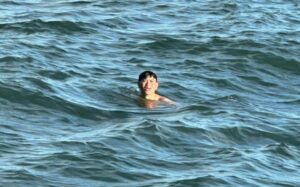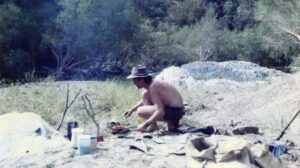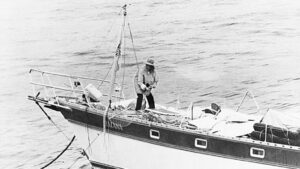If so much could be accomplished by a divided and disaffected party, what might have been done by a united and properly disciplined body equally well-equipped?
Charles Francis Hall had made a name for himself with two expeditions to the Arctic in search of John Franklin’s doomed 1845 Northwest Passage expedition. This was enough to secure U.S. government funding for Hall’s proposed North Pole expedition.
Hall refitted an old navy tugboat for the job. At great expense, Hall prepared the newly christened Polaris for arctic travel to the best standards of the time. He reinforced the hull, added four whaleboats, and installed an engine so that it could run on both wind and steam.

The only known photo of Charles Hall. Photo: Unknown author
A leadership struggle
By the time they arrived in Qeqertarsuaq (named Godhavn at the time) on Disko Island, off the west coast of Greenland, some of the men had already been pilfering alcohol from the stores.
The Inuit saviors
The crew also included an Inuit contingent. Ipirvik was a guide and hunter with whom Hall had traveled on his previous expeditions. Ipirvik brought his wife Taqulittuq, a seamstress and interpreter, and their young child.

The Inuit hunter Ipirvik. Photo: G. W. Pach
In Northwest Greenland, the Polaris picked up another hunter, the eventually famous Hans Hendrik. (Among other things, Hans Island, the disputed island between Denmark and Canada, is named after him.) Hendrik insisted on bringing his wife and three young children too. The “extra mouths” were not a popular addition among the crew.

A Greenland stamp commemorating Hans Hendrik.
Hall dies mysteriously
After a cup of coffee, Hall became violently ill. He was vomiting, suffering delirious episodes, and was increasingly weak. He suspected that he’d been poisoned. Two weeks later, he was dead. At the time, Tyson isn’t sure what to make of Hall’s claims but he certainly doesn’t trust the German contingent.

Hall’s grave today, in Northwest Greenland.
Budington, now the undisputed captain, was keen to return south, but it was already early winter. The crew had to hunker down until the ice thawed. The long winter failed to improve morale. “Nothing is occurring that is pleasant or profitable to record,” Tyson wrote.
Despite Budington’s indifference, the crew made two more attempts to travel to the North Pole. The trips were a disaster and they only succeeded in losing one of the small whaling boats. They didn’t get far.

An illustration from Arctic Experiences: Containing Capt. George E. Tyson’s Wonderful Drift on the Ice Floe. Photo: British Library
Adrift!
Ethnic tensions
But the disorder and ethnic tensions from the Polaris carried over. The seamen and Meyer were all German, and they stuck together. Tyson found that they were, at best, extremely reluctant to take any orders from him. Soon, he found that food rations were disappearing from their store. Worse, he was unable to stop them from destroying one of their two small boats for firewood.

The Polaris expedition route and Tyson’s drift. Photo: Wikimedia Commons
But as navigator, Tyson realized that they were on the west, or Canadian, side of Baffin Bay. No magical food cache was going to hove into view. Meyer’s continued insistence that they were to the east did nothing to halt provision pilfering among the men.
Tyson grew increasingly concerned that they’d soon make off with the provisions and the remaining boat toward where they think that Greenland must lie. This would have inevitably led to the death of the entire party.

The Voyage of the Polaris by William Bradford (1875). Photo: William Bradford/Taubman Museum of Art
Divisions widened
Somehow, all survived
It is a miraculous story of unimaginable hardship, yet somehow all 19 members of the crew had survived, including the young children. The 14 crew that had remained on the Polaris were eventually saved too. Low on coal, they had run the ship aground in northern Greenland. (It is said that pieces of the Polaris can still be seen there.) They almost certainly would not have made it through the winter if not for the help of the Inuit. After seeing out the winter, they used wood salvaged from the ship to build a craft in which they continued south. A whaling ship picked them up in July 1873.
The story has one final twist. The fate of the Polaris led to a naval inquiry, which heard testimony from several members of the crew. They eventually ruled that Hall’s death was the result of a stroke. However, nearly 100 years later, a writer exhumed Hall’s body and tested tissue samples. The results suggest that Hall ingested a large amount of arsenic in his final two weeks, consistent with poisoning. This puts the ship’s doctor, Bessels, very much in the spotlight. Damningly, before the expedition, it also appears that the two men had been vying for the affections of the same woman in New York.





